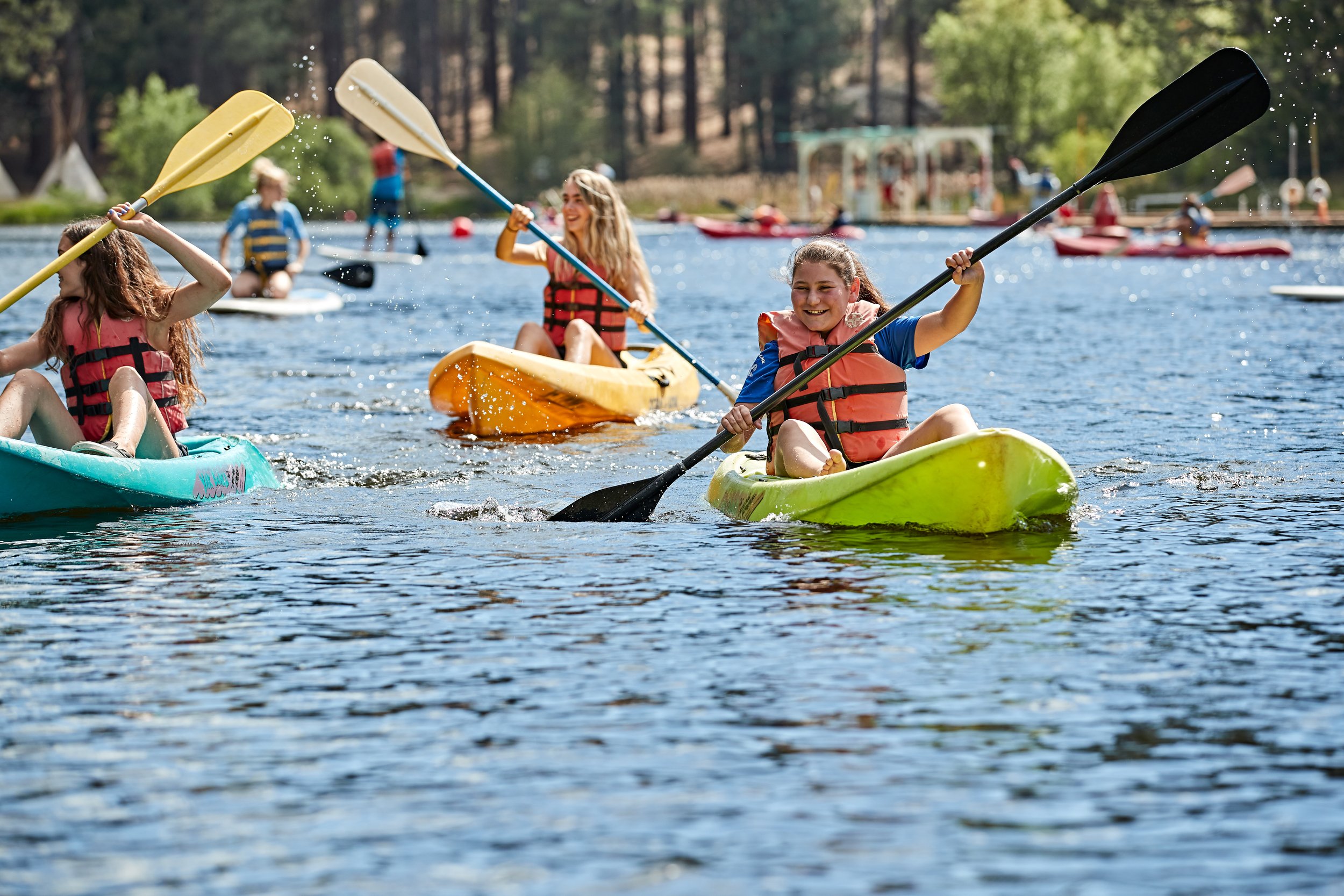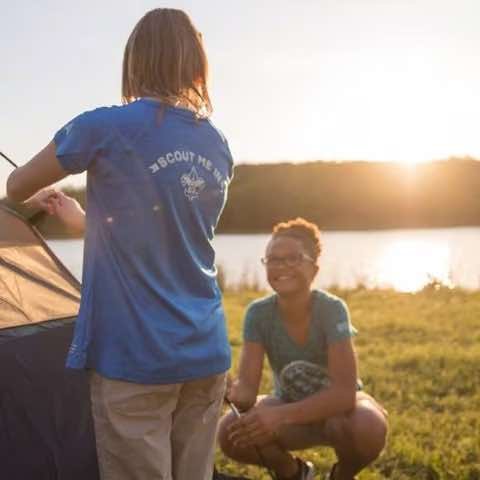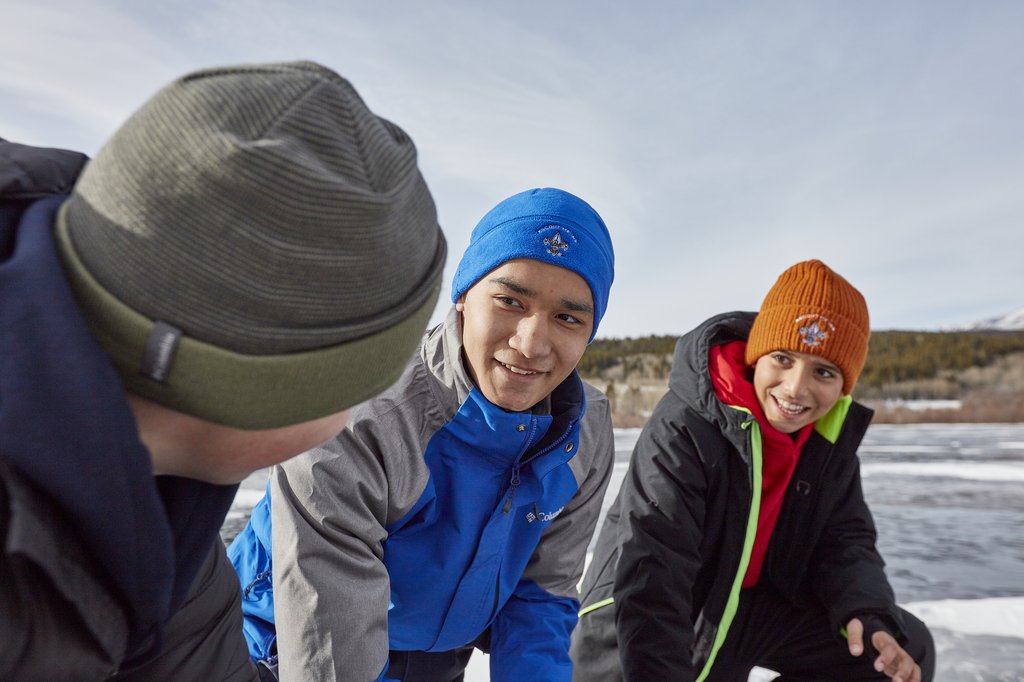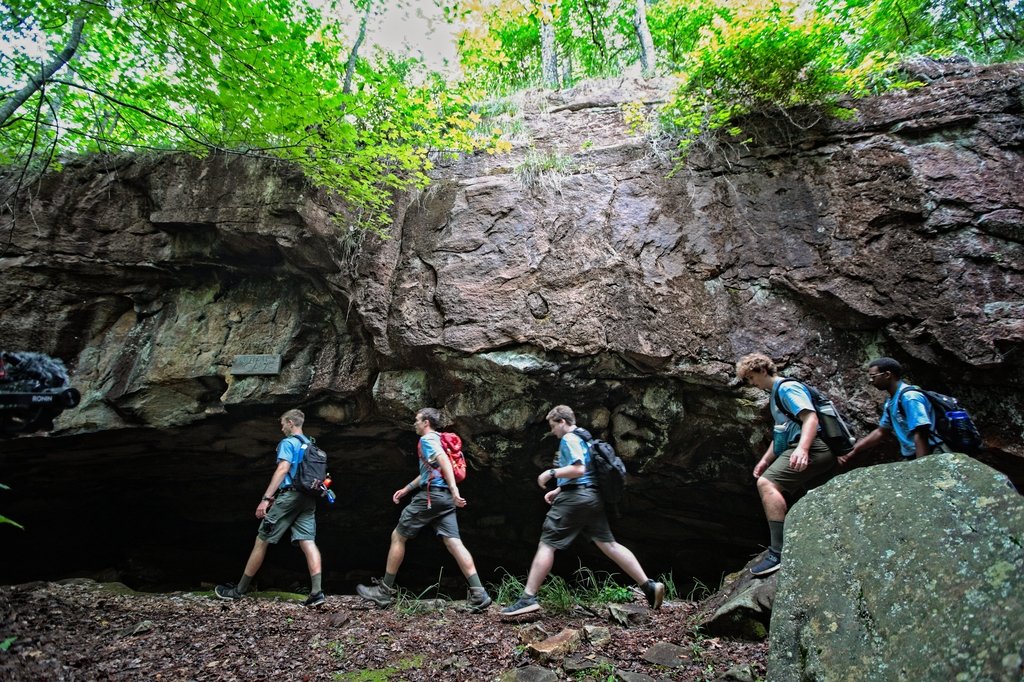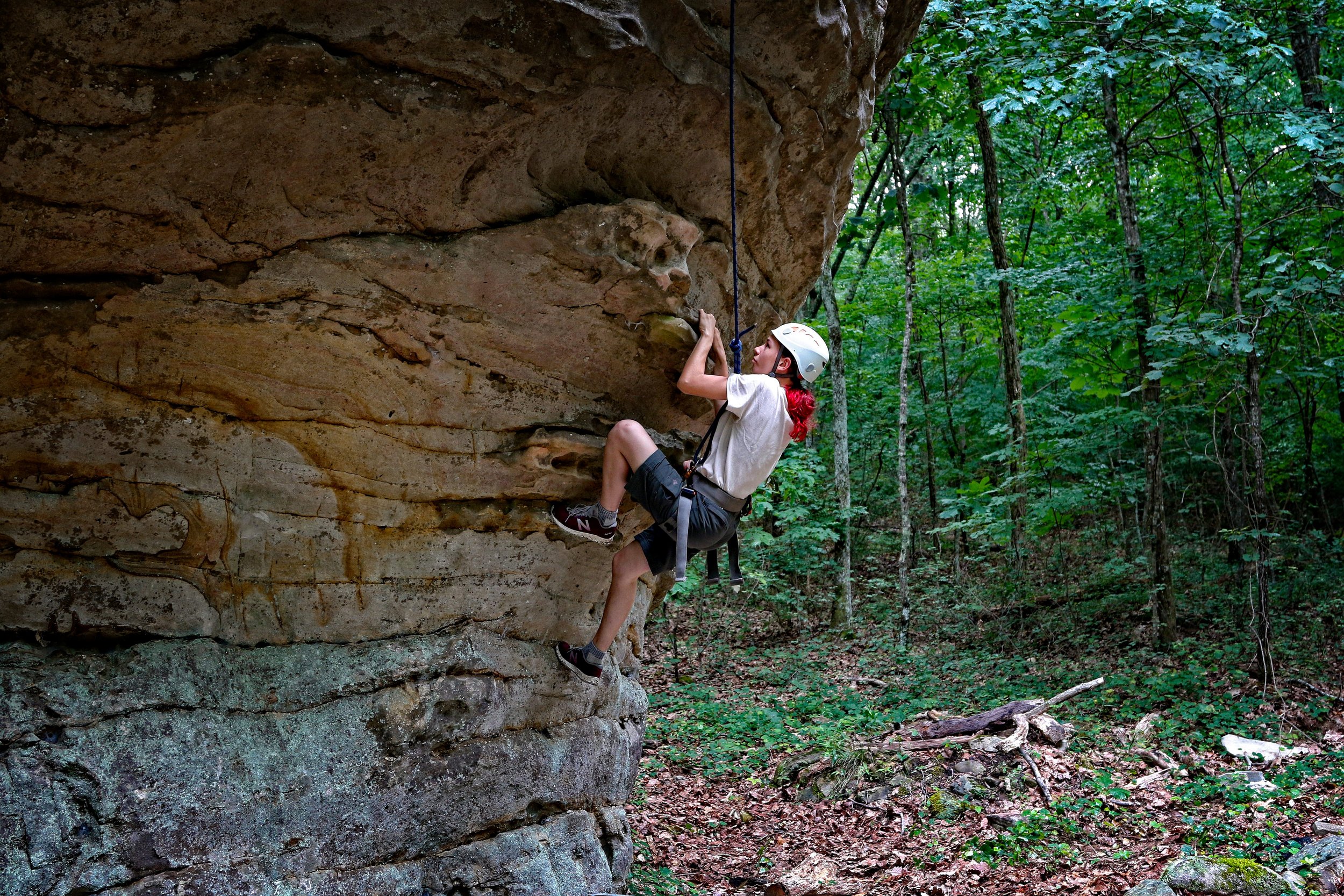Camping & Hiking in the Great Outdoors
-
One of my Favorite parts of Scouting is the outdoor activities! Boys and Girls are given the ability to literally SPREAD THEIR WINGS!
We go camping once a month to different BSA Camps within a 1-3 hour driving distance. While camping Scouts can learn valuable skills, such as how to start a fire, how to cook a meal, and much more! Camping Trips are also a way for scouts to check off Merit Badge or Advancement requirements and earn awards.
Our Troop also has at least 2-3 trips a year that we go Hiking along the AT Trail. These Backpacking trips allow the scouts to work as a team to carry everything they need for the 2 days trip!
-
When you join Troop 355 you will have access to our private Website TroopWebHost. You will be able to sign-up and pay for any activities.
You will also be able to see a history of all money going into and out of your Scout Account.
You are able to deposit money into your Scout Account through the website using a CC or you may send a check or cash to the meetings. We do request that any checks and cash be sent in an envelope with your name, amount and what the money is for (ie. Archery camping trip).
-
Weekend campouts or hiking trips are usually within 1-3 hours drive from St. Clare Parish.
We meet in the front of the Church on Friday at 5:30pm and carpool. Typically we have enough Adult Leaders driving that we are able to accommodate everyone.
If you are available to drive we ask you to let us know by signing up as a driver. We do not allow Scouts who are old enough to drive to transport other Scouts UNLESS it is a sibling.
We follow the BSA 2 deep leadership rules when carpooling, so no single Scout can drive alone with an Adult UNLESS it is that Scout’s parent or legal guardian.
-
You need to obtain some items – but do not have to spend a lot of money. All of the things listed below can be expensive at fancy shops, but you can often get used things at low cost if you shop around. (Personally I love Amazon!)
Sleeping Bag - We recommend a “three season” sleeping bag that you can use in the spring, summer, and fall.
Ground Pad - This is a simple foam or blow up pad that you roll-out on the ground in a tent and put your sleeping bag on top of. It keeps you warm from the cold ground, dry from dampness and comfortable because of the padding. (I HIGHLY recommend the foam as it is easier for Scouts to set up and pack up quickly!)
Daypack - To start out, you only need a simple backpack that can contain the basic things you need to bring on hikes and short camp-outs. You can even start out by using a large school backpack that you already own.
Pocket Knife - Every scout wants one of these when we are on campouts. Get a sturdy one that you don’t mind getting dirty that has the basic knife blades. (DON’T carry it to meetings or camp until you earn your Totem Chip)
Water Bottle - Any lightweight water bottle will do 24-32oz. (You will need 2-3 on hiking trips)
Hiking Boots - These should be sturdy boots that have thick rubber soles for hiking in wet, rocky terrain. They should support (come above) your ankle and fit well. This is one item that you do not want to get wrong. It is important to make sure that they are not too snug or too loose. Be sure to wear your hiking socks when trying on your boots. Your heel should not be rubbing when you walk in the store and you want some room around your toes.
Headlamp - You can pick these up at Walmart and Home Depot. Small ones with LED lights and 2 or 3 AA batteries are the best. I do not recommend flash lights as they often get lost.
Rain Jacket & Pants - You will end up on a hike or on a campout when it rains. A bunch. There is nothing worse than being wet, cold and miserable and that is what you will be if you are not prepared. So, you need a very light jacket and pants that fit over the clothes you are wearing when it rains. These should be very thin and lightweight so they do not take up much space in your Daypack or weigh you down on a hike. Poncho’s are also acceptable.
Hiking socks - It is important to wear appropriate socks with your boots to prevent blisters. And you need at least 2-3 pairs in case they get wet. Hiking socks should be calf or higher. NO ANKLE SOCKS! There are lots of affordable Merino Wool options on Amazon!
-
Our Troop provides tents for scouts on Camping and Hiking trips. There is no need to purchase a tent.
We prefer to have 2 youth to a tent. Scouts may not share a tent with someone if they are 3 years older than them.
Youth are not able to share a tent with an Adult unless it is their Parent or Guardian.
Boys and Girls have separate tent areas and bathrooms. Adult Leaders set up tents between the boy and girl tents.
-
Our Troop HIGHLY recommends that Scouts attend Longterm (or Summer Camp) each year. Longterm is a week long BSA sponsored program where youth are able to work on Rank Requirements and Merit badges. They are also able to meet Troops from other areas and form closer bonds with their Patrol.
The scouts vote on what Longterm program they would like to attend each year. First year Scouts usually attend a special program that focuses on 1st year skills and merit badges. Older Scouts are able to sign up for the Merit Badges they are interested in that may not be available locally, like blacksmithing. Scouts usually complete 4-5 Merit Badges during the time they spend at Summer Camp.
The cost is typically $400-450 but can be more depending on the distance. In the past for trips that required a bus for transportation we have held fundraisers to cover the travel costs.
-
The BSA offers several High Adventure Camping options, including Philmont Scout Ranch, Sea Base and Northern Tier, and The Summit. Our Troop offers a High Adventure Trip every other year. In 2023 we attended the National Jamboree at The Summit.
High Adventure Camping options are for Scouts over 13 years of age. They are more costly due to Travel and the increased cost of the program.
We plan our High Adventure Trips in advance and offer payment plans and fundraising options.
While these trips are expensive they are “Once in a Lifetime” experiences where youth are able to put all their Scouting skills to the test!
-
Small hiking backpack.
Scout Pocketknife, small flashlight, and matches.
Lightweight rain suit.
Hiking Boots that are already broken-in.
Clothing appropriate for the weather expected during the hike.
Snacks like granola, dried fruits, and food bars.
First-Aid kit with Bandaids in case of blisters.
Sunscreen with SPF 50 or higher.
Hat with visor or brim.
Map
Water bottle
-
Required Gear
Sleeping Bag
Pillow
Backpack or Duffle Bag
Mess Kit (Cup, bowl, spork)
Headlamp & Extra Batteries
Canteen or Water Bottle
Personal Toiletries
Medication (Adult Leader must be aware of any medications)
Soap (in Plastic Case / Bag)
Shampoo (Small Bottle)
Washcloth & 2 Towels
Dental Floss
Toothbrush & Toothpaste
Comb / Brush
Insect Repellant
Sunscreen (SPF 50 or higher)
Kleenex / Tissues
Clothing (Mark with Scouts Name)
Dress Uniform (Class A)
Informal Uniform Shirt (Class B shirt)
Sweater or Sweat Shirt
Jacket if warm, Heavy Coat if cold
2 Pairs of Socks
2 Pairs of Underwear
2 T-shirts
1 Pair of Jeans or Long Pants
1 Pairs of Shorts (if warm weather)
Sneakers / Gym Shoes
Hiking Boots
Rainsuit/Poncho
Pajamas / Sleepwear
Hat
Personal
Scout Handbook (a must)
Pen or Pencil
Scout Pocket Knife
Sunglasses
